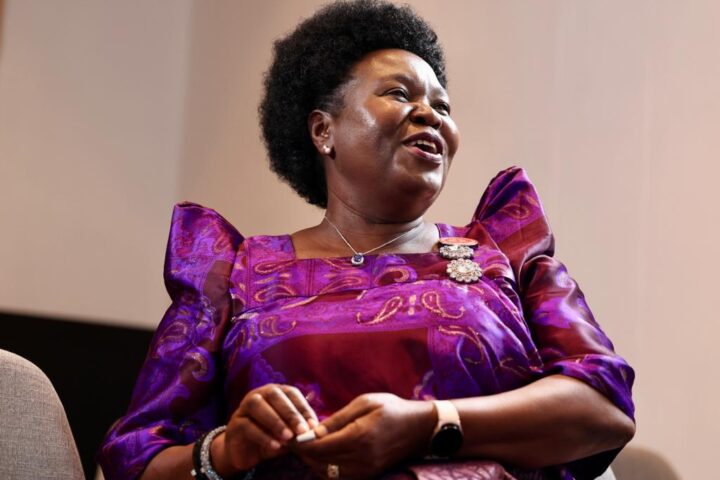Some people may call this revisionism. They are wrong.
Two years after independence, and according to the official report issued from that era, Uganda would appear to be a high-flying confident sovereign state with a spring in its step.
“ The government is seeking to alter the whole way of life of the people for the better” stated the then acting Prime Minister Kalule-Settala MP.
Some of the plans of the country may seem from another dimension today. Fertility, birth and death rates measured acceptably by global standards according to the report and the country was experiencing a boom in tourism, migration, “experts and investors coming from abroad. There was also increased demand for Ugandan citizenship from non-citizens mostly Asians and record applications for passports from Ugandans, many of who wanted to travel for study abroad.
The government reported it had responded by asking its embassies abroad to issue passports. “ It is expected that the Ugandan Mission in Moscow will be issuing passports soon” it said. It however sought to restrict the equivalent of temporary visas and work permits today to reduce employment related migration.
“ The policy has been to restrict the issue of persons doing jobs for which local manpower is not available,” the government said. Some of the regional problems seem familiar however, tourism figures were affected by “instability in Congo and Sudan” in 1964, the government claimed but did not dent the country’s confidence.
Many areas of concern by the government then have been greyed by the political instability of the government. Some may seem even alien today. For example, the government promoted community self-help projects and offered assistance to local leaders to build “minor bridges, access roads, improvement of water supplies, construction of community centers, aid posts, preparation of sports fields “ and so forth.
Government provided the field assistance. Communities did the rest. In total the government claimed it planned 612 community centres and completed 129 at Gombolola level intended for “area extension services, youth programmes” and targeting development of cottage industries away from the industrial towns. It also put a big stock in vocational training at the local level and sent literary training kits to enable teachers, many of them voluntary to train and establish their own organisations especially for adult learning.
To boot Uganda established a National Library Service with its own headquarters and staff. In 1964, the service had bought its own car and celebrated the building of a public library in Kampala. The government also reported that its book box postal service, for sending and receiving books, was functional and hoped that “community centres and rural training centres will also have small libraries. Its social services mentioned in that year’s annual report also include the Probation and Social Welfare Service that operated independently.
The probation office organised community service and re-education for ex-inmate and others to persons with disability, youth and women groups, group work on community assets in towns and urban centres. The government planned a robust technical response to these social needs organising training. It separated the trials of juveniles (Kampala had the only juvenile court in the country) It however reported that the juvenile remand homes were functional catering to young people on remand, needing care and protection, those in transit who needed lodging such as youth heading to reformatory schools or those undergoing medical care.
The civil service and its needs were a major aspect of the “Uganda Report 1964”. It had established the National Housing Corporation to deal with shortage of houses “for both the civil service and the public in the shortest possible time”. There were challenges the government said in finding investment for low cost residential housing for this purpose. However it reported some successes that included 125 houses in Bugolobi, 11 in Mbuya and 25 in Entebbe. It also organised a competition for low-cost housing to find affordable models and set aside 600,000 pounds to build low cost housing in slums in Kampala and Jinja to contain their spread. Some of these projects are recognizable today – include a planned 400 units at Mulago, housing at Mpumuudde and a low cost housing scheme known as the Bukoto Housing Scheme made up of 780 flats “ for middle income groups at economic rent”.
“Plans are being worked out for a scheme to assist persons interested in building better homes in the following districts – Kigezi, Lango, West Nile and Acholi” the report said
Uganda, according to the minister, had to deal with some uncertainties related to independence. Seeking to build a more modern economy, and with the departure of expatriates it faced a labour crisis. In 1964, it reported that a record number of mostly semi-skilled people sought work. Skilled workers on its live register were easier to deal with but specialised training was “difficult to fill”. In any case it reported that 8000 men and 1,529 women applied for work at its employment exchanges ( offices) out of which 1,172 were placed leaving out 693. The government also reported vacancies that had been left unfilled (91) for want of experienced labour and worried about finding jobs for its school leavers.
At the end of the year it set up a joint committee of the ministries of labour and education to deal with the problem. Then there was the issue of earnings. According to the government report – most employers were still hiring people without written contracts but that “ the contract for the completion of 30 working days” was still common. Consequently it appointed a Minimum Wages Advisory Board in September 1964.
The board was to study working conditions and recommend minimum wages for unskilled workers as well as the sum employers could lawfully deduct for housing from the wages of those they employed. The Board at the report writing had been tasked to consider for wages in “Kampala, Port Bell, part of Mengo Municipality, Jinja, Njeru as well as for the first time for rural areas to which the public was invited. Perhaps a key fixture of the worker community of the day was unionization.
In 1964 there were 40 registered trade unions with 96,000 book memberships and altogether held works committee meetings totalling 197 for that year. According to the government these works committee meetings had eased the need for employers to hold their own consulting meetings to manage relations with workers. Not everything was rosy, the government reported that in 1964 there were 108 workers strikes involving over 13,000 workers and a loss of 39,590 man-days – a drop from 150 strikes the previous year.
These detailed reports on industrial relations reflected the involvement of the government in the economy of the time- as distinguished from the private sector led policy in the coming years.
The government, for example, reported it had conducted some 7,914 inspections under the Factories Ordinance and some 1,602 visits to industrial and agricultural investments around the country. Its factory inspectors recorded the number of accidents and where they occurred, the number of compensations and labour cases investigated and completed and the amounts compensated. The civil service was mostly the centre of activity and in its report the government patted itself on the back in most areas including in the safety, health and welfare situation for government workers in great detail.
For instance it reported that “ In January (1964), housing of superior standard compared to other housing schemes in Uganda, consisting of 10 units of four rooms each, and 17 blocks of six single rooms each opened at Namulonge” ( a site of a recent spat between real estate tycoon Sudhir Ruparelia and the government today), that “Uganda National Parks built 13 permanent houses at Queen Elizabeth National Park for their employees”, that East African Tobacco Co. Ltd completed 12 asbestos houses in Vurra, West Nile. At Kilembe ..146 houses of four rooms each for Kilembe employees, had been completed with cooking facilities and water-borne sanitation ( flush toilets). Uganda had at the time followed Tanzania into establishing a provident fund ( social security) targeting government workers initially much to the dismay of the more established private funds.
The issue is still alive today except in the reverse.
The 1964 Uganda report covered not only the sections reviewed in this article. They included the state of Uganda’s taxation and finances, currency and banking, commerce and industry and a great detail in Uganda’s plans especially in public services, which have been a policy response of subsequent governments. In its section on public utilities for example, the government reported a rise in accidents dominated by fire and recorded the response rate of the Fire Brigade.
“There were five major fires in Uganda during 1964, all were contained and confined to the building of origin” it said. Perhaps of interest today is the rarely reported fire inspection service of the Brigade and its Ambulance division, St Johns Ambulance. “Over 900 fire prevention inspections were carried in government buildings, factories, petroleum installations and places of public entertainment” the report claimed. It may also be surprising that rail transport was considered the cheapest mode of transportation of that time.
In 1964, the railway had been extended to Packwach in the north but also served commercial needs. Where it thrived was due to the cash crop economy ( wagons were added for example to transport more cotton) but where it did not the extension was protected by legislation. The rail service according to the report had to be subsidized to protect its economic utility. A surcharge imposed was only excluded for the transport of fertilizer essential to the mainstay of the economy.
The government report also reported that all in-land water transport services were operational save for inland ports on Lake Victoria, which were affected by rising lake levels that year.
The political and social context of the government’s report into its affairs perhaps explained its positive tone. In his general review the minister reported that the alliance between the ruling coalition had ended that year with the Uganda People’s Congress becoming a virtual single party. “ These changes will, as can be seen later in the book, be landmarks in the history of Uganda’s first five year development plan” the minister proclaimed prophetically. Clearly the UPC led government hoped to win both public support with its programs and for its programs with the publishing of that year’s report. The report included cabinet reshuffles and state visits as well as a High Court ruling against the Buganda government for the transfer of urban and rural police stations from the Central government to the Kabaka’s.
There were other issues reported. Buganda according to the report also protested its share of national revenue. The courts ruled against Buganda. 1964 was also the year that Buganda lost the counties of Buyagga and Bugangazzi in a referendum held in November. UPC was upbeat. The Leader of the Opposition Mr Basil Bataringaya had crossed over to the government side with a record number of MPs.
Thus the report noted that “by the end of the year, 1964, the strength of the parties in parliament was such that U.P.C commanded 60 out of the 91 seats ( from the 37 it had at independence. The party then took on great if confident gambles recorded throughout the book. The preface of the report highlighted the plans for industries “ frim the large scale expansion of sugar production with the help of India to factories for the manufacture of bicycles, blankets, textiles, tyres and other goods”. It took steps to do so and recorded this in great detail.
Its political support was however scuttled and the rest including its progressive plans, as it is said, is history.











[…] with which the state – not yet de-constituted by the subsequent political squabbling was able to do. It did not yet have to deal with the impermanence of the presidency. It did not yet, as it […]